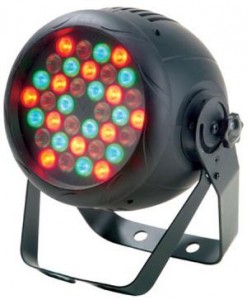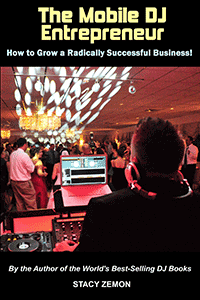by Ben Stowe, CTS
 If only I had a nickel for every person that asked me what par a LED fixture was. I understand it’s virtually the only way they know to attempt to quantify the output of a fixture and thus make comparisons against other fixtures to determine the appropriate one for a given application.
If only I had a nickel for every person that asked me what par a LED fixture was. I understand it’s virtually the only way they know to attempt to quantify the output of a fixture and thus make comparisons against other fixtures to determine the appropriate one for a given application.
I wish there was a simple, universal method for comparing these fixtures, but there really isn’t. As I contemplated how I would write this article I struggled with how to package the information for the novice user, and I found it difficult despite the fact that I understand it quite well.
PAR Deconstructed
When we refer to a fixture by it’s “par” rating, we are tossing back to the good ol’ days of the parabolic reflector and lamp. The par number simply told us the diameter of the reflector, measured in 1/8th of an inch. A par 64 is 8” in diameter.
It didn’t tell us anything about the intensity, wattage or coverage area of a lamp used. It tells us even less about an LED fixture, since the number and type of diodes put in the area once used by a reflector can vary greatly.
Many fall victim to the temptation to measure LED fixtures by the basic structure of the diodes it uses. While this is much more effective and accurate than calling a fixture a “par”, it still is woefully inadequate in terms of making a real comparison.
We often throw around terms like 5mm, 10mm, 1 watt, 3 watt, tri and quad LED, but are all 5mm LEDs created equal? Hardly. Their intensity and beam angle can vary, not to mention their quality.
Colored Diodes
Further complicating things is the actual color of the diode itself. A white LED emits a far greater portion of the visible light spectrum than any colored diode does, and thus will have a much higher value in the various scales we use to measure light. Likewise, any fixture that contains a white diode may have a higher output value than a fixture using only red, green and blue, but may not be brighter for an application that requires green light only.
I applaud manufacturers that publish photometric data for the individual diode colors of a fixture as well as a composite.
Lumens & Lux
With this rudimentary understanding of the basics behind it, we can dive into the units of measure. Most often you will see a fixture measured in “lux” (Latin for light, and equal to one lumen (lm) per square meter). This is only useful if you know what a Lumen is.
A Lumen is a unit of measure for luminous flux equal to the light output of one candela (cd) at a steradian solid angle over one second. For what it’s worth, we typically measure individual LEDs in millicandela (mcd). It becomes quickly clear how unclear this can be.
In an attempt to keep it clear, we’ll reasonably assume we can compare Lux to Lux, bearing in mind that a fixture with a wider beam angle may have more light output, but will measure less Lux at any point than one with a narrow spread. Manufacturers tend to use the most favorable measurement they can when publishing specs.
The steradian angle helps us here achieve some uniformity. For example, a 10,000 mcd diode with a 15 degree angle will measure approximately 0.5 lumens, but another 10,000 mcd diode with a 30 degree angle will measure over 2 lumens because it is producing 10,000 mcd over 4 times the area of the 15 degree diode.
In order to keep the comparisons as far as possible, be certain that you are comparing lux values from the same distance. It is also best if you ensure that the beam and field angles are as close to the same as possible, as well as the color structure of the fixture. Compare RGB fixtures to RGB fixtures, and RGBAW fixtures to RGBAW fixtures.
If individual measurements for the diode colors are published you may be able to compare them fairly accurately. For example, compare the red from a RGB fixture to the red of a RGBAW fixture.
The pros and cons of the various combinations of colored diodes are another article entirely…Coming to you sometime in 2011!
Ben Stowe, CTS – Sound and Lighting Guru
Ben Stowe serves the AV industry as the President of NLFX Professional, an industry leading supplier of sound, lighting and video systems, a role he has maintained since founding the company in 1993. Ben’s AV installs have been featured in almost every major industry trade magazine. He has assisted lighting manufacturers with product R&D, as well as contributing to the DJ industry through presentations at trade shows and articles for magazines in the U.S. and Europe. Ben holds an electrical license as well as other certifications and accreditations, including the most widely recognized one in the AV industry, the InfoComm CTS. Ben’s highly praised “Event Lighting” DVD is available at ProAcademySeries.com. To watch a promotional video about it click here. To contact him email [email protected].




